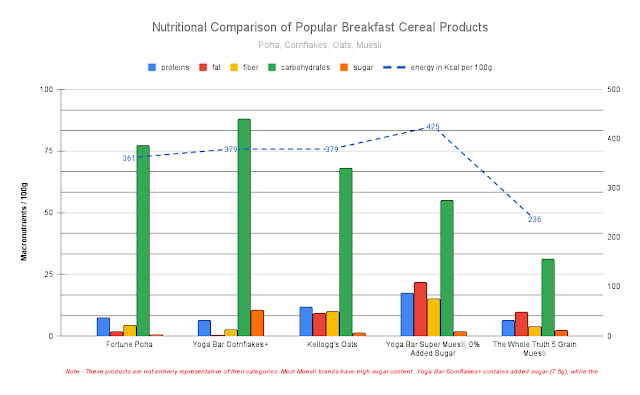Dunking into the Data: Nutritional Insights into Indian Biscuits 🍪
I analyzed 228 products (with known nutrition facts as of March 16, 2024) in the Biscuits category of the India database of Open Food Facts - the 'Wikipedia of food', Not surprisingly, a majority of these products received a Nova Group grading of 4, indicating Ultra-Processed Food (UPF) status, the red alert for unhealthy choices!
The data, which has been obtained from Open Food Facts and subsequently cleaned up, is available on GitHub in CSV format.
To make it easier to slice and dice the data, view the above data on Github with the Flat Viewer tool. The following screenshot from a view generated by that tool shows graphs of the distribution by weight of content of sugars and added sugar in 100 gms of the SKUs.
Some cream biscuit varieties popular among kids not only contain a high quantity of sugar but also cholesterol and trans fats.
Plastic is the most common form of packaging.
The weight of retail biscuit packs can vary significantly, ranging from 25 to 1000 grams. This variability makes it challenging to compare prices because the quantity cannot be determined from the product dimensions alone.
The shelf life of biscuits range from 4-9 months.
Parle, Britannia, Sunfeast (owned by ITC Limited), Priya Gold, Cremica, Anmol (owned by Haldiram's), Patanjali, Unibic, Dukes, Cadbury Oreo are some of the popular biscuit brands.
If you're curious about how these biscuit nutrition details compare to those from around the world, you can check out the Biscuits category of the Open Food Facts database. This crowdsourced database contains nutrition information for over 41,000 products from across the globe.
Note - This study relied on Open Food Facts data as of a specific date. Details presented on product packaging are subject to change over time. For the most up-to-date information, please refer to the latest data.
Also see -




Comments
Post a Comment